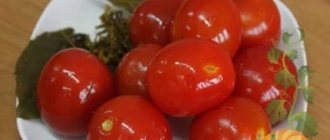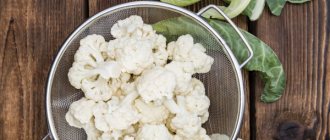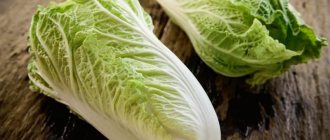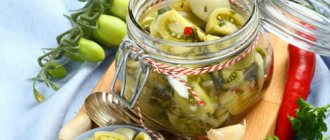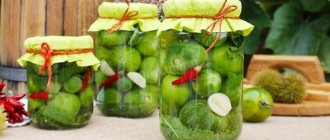In winter and early spring, we experience a deficiency of vitamins, which is caused by a lack of sun, fresh vegetables, berries and fruits. Sauerkraut can easily replace most of these products, bringing great benefits to our body. Since it contains not only very useful vitamins (C, P, B, A, H, E, K) but also important microelements (iron, magnesium, potassium, calcium, phosphorus, sodium, sulfur, zinc, chromium, iodine, copper, molybdenum, etc.).
Not so long ago, this product was prepared for the winter only in the fall, and the whole family usually took part in preparing winter supplies for use. It was fermented with the addition of carrots, beets, various berries and fruits, for which they chopped, chopped into pieces, quarters (peluski) or used whole heads of cabbage.
Ready-made cabbage, flavored with vegetable oil and onions, can be served for lunch or dinner with main courses, for example, fried potatoes or meat cutlets. You can also use it in preparing salads, such as vinaigrette, main courses, use it as a filling for dumplings, pies and pies, and even cook borscht or cabbage soup.
Today I will introduce you to various ways to prepare this delicious winter snack.
For your information, the recipes offered below will remain relevant both in winter and spring, since cabbage and carrots are now sold in stores all year round.
Cabbage selection
One of the main conditions for a tasty snack is the right choice of products. Mid-late and late varieties and hybrids of vegetables are suitable for this (for example, Moskovskaya, Countess, Valentina). These varieties of cabbage heads are juicy and sweet and do not lose their crunchiness when fermented. The leaves are taken without a bitter taste and release a lot of juice.
When purchasing, the head of cabbage is inspected from all sides, checked for damage and traces of pests. Small vegetables (about 1 kg) with white and hard leaves are suitable.
Tara
The second important condition for high-quality sourdough is the choice of container: not only the taste of the product, but also the shelf life depends on it.
Wooden
The best containers are wooden barrels and tubs. Before use, pour boiling water over them and leave covered for 10 minutes. The water is replaced with new (cold and purified), left for 20 days, and changed every 3-4 days. Afterwards, the liquid is drained, and the container is dried, fumigated with sulfur and washed thoroughly.
Attention! It is better to use oak tubs for sauerkraut: they protect the product from mold and moisture.
Enameled
Housewives are increasingly using enamel dishes for fermentation. When choosing such a container, it is important that it is not damaged or chipped. Otherwise, the metal will begin to release toxic substances that will spoil the taste of the product and harm your health.
Plastic
When using such containers, pay attention to its labeling.
Only plastic that has a sign in the form of a triangle of three arrows with the number 5 inside and the letters PP below will do. This is how safe and environmentally friendly polypropylene tableware intended for food use is marked.
Glass
If there is not much cabbage, it is better to ferment it in glass jars (three or five liters). The container is taken without chips or damage.
Important! Do not use utensils made of metal or stainless steel: during fermentation, the acid reacts with the metal and the vegetables lose their beneficial properties.
Preparing cabbage
Before fermenting a vegetable, it is cleared of excess leaves and washed thoroughly in cool running water.
The head of cabbage is cut in half and chopped with a knife or chopped on a special grater, not too thin, otherwise the snack will become soft. The stalk is removed or cut separately and added to the rest of the cabbage. Sometimes they leave halves, whole heads of cabbage or cut them into squares. The grinding option depends on the recipe or personal preference.
Which variety to ferment
Late and late middle varieties are ideal for pickling. Young cabbage is good for soups: cabbage soup or borscht, for salads and other appetizers, but it is not suitable for pickling.
But, if you use cabbage collected from the plot after the first frost, the result will please the whole family. During this time, a lot of sugar accumulated in the cabbage, the leaves became denser, stronger, and filled with juice.
One of the best and most proven varieties is Gloria. The fork size is usually 2.5 - 4.5 kg. Cabbage is stored for a long time, until the New Year.
Here is a list of varieties that are quite good at salting:
- Belorusskaya-455,
- Brunswick,
- Sugarloaf,
- Countess,
- Albatross,
- Gribovskaya.
Advice! The Kolobok and Amager varieties are not suitable for pickling; it will taste bitter.
Cabbage of any variety has white forks with slightly flattened sides. Cabbage with an elongated stalk is sometimes rough, does not produce enough juice, and does not ferment well.
Sauerkraut without vinegar
This classic winter recipe is one of the most common.
Ingredients:
- 3 liters of purified water;
- 3 kg cabbage;
- 1 kg carrots;
- 150 g coarse rock salt.
Step-by-step instruction:
- The head of cabbage is crushed.
- The carrots are washed, peeled and grated.
- Sprinkle the vegetables with a small amount of salt and mix thoroughly.
- Cabbage leaves are placed in the selected container and chopped vegetables are laid out.
- To prepare the brine, mix water with salt and fill the container completely.
- Cover the vegetables with leaves and place a weight on top.
- Place the starter in a warm place (optimum temperature - +19...+22°C) for 3-5 days. After a day, foam forms on the surface and is collected.
The cabbage will be ready when the foam stops forming and the brine becomes clear.
A bit of family history
When my husband and I worked, we didn’t always have enough time to prepare sauerkraut; it happened that we would miss a season or two, which I later regretted in the winter.
Well, we didn’t have time to pickle ours, but in the store they sell all the pickled stuff, you won’t really find pickled stuff! And they make this cabbage salad every day, that is, not from healthy autumn cabbage, but from winter cabbage. There are no vitamins in it!
Now we are retired, and we make healthy cabbage for the whole family for the whole winter! Previously, when my husband’s parents were alive and well, they prepared cabbage, and we came to help.
From my mother-in-law I then learned all the tricks, how to properly prepare sauerkraut for the winter, and what forks (not to be confused with cutlery) to buy. And of course, the recipe: proportions of salt and carrots.
They had a device for salting: a long wooden trough with a hollowed out middle. The trough was round in cross-section, and a round metal hoe with a wooden handle was attached to it.
I wondered how it was done that the shape of the trough exactly matches the bend of the hoe? If it didn’t match, it would be impossible to chop. Here are the masters! These items, unfortunately, were lost in a fire.
But, to my delight, I found this trough with a hoe on the Internet, for sale! Craftsmen are still doing it! I’m showing you a photo from the Internet, you already understand that I don’t have such a trough, unfortunately.
Recipe Variations
Peppers, cranberries or lingonberries, apples, and spices to taste are added to the appetizer.
Cabbage "Picant"
A recipe for those who like it spicy. Pepper will add a special piquancy to the dish.
Ingredients:
- 1 kg cabbage;
- 200 g carrots;
- 2-3 cloves of garlic;
- 1 hot pepper;
- 5 g salt;
- 15 g sugar;
- 30 ml vegetable oil;
- 500 ml purified water.
Cooking method:
- The head of cabbage is chopped, the carrots are grated, the garlic is finely chopped, the pepper is seeded and chopped.
- Place the vegetables in a deep bowl and mix.
- To prepare the brine, add sugar, salt, and butter to a pan of water. The mixture is brought to a boil.
- The hot marinade is poured into the vegetables.
- Place the starter under a load in a warm place for 5-6 hours.
- Transfer the cabbage into a glass container and place it in the refrigerator.
Cabbage "Vitaminnaya"
This vitamin salad strengthens the immune system and improves the functioning of the gastrointestinal tract.
You will need:
- 1 kg of white cabbage;
- 2 carrots;
- 1 clove of garlic;
- red bell pepper - to taste;
- 250 ml water;
- 15 g salt;
- cranberries or lingonberries - optional;
- 30 g granulated sugar;
- 15 ml vegetable oil.
Preparation:
- The cabbage is cut into strips, the carrots are grated, the bell pepper is seeded and chopped, the garlic is chopped.
- Mix vegetables with berries. Pour in the vegetable oil and leave the resulting mass for 10 minutes.
- Add sugar and salt to a saucepan with water. The mixture is placed on low heat and boiled.
- Pour the hot marinade over the appetizer and mix everything thoroughly.
- The workpiece is covered with gauze or cling film and left for 10–12 hours in the refrigerator.
The longer the dish sits in the refrigerator, the richer its taste will be.
With carrots and apples
Apples increase the vitamin value of a dish and improve its taste. Sweet and sweet and sour varieties are used.
List of ingredients:
- 500 g cabbage;
- 200 g carrots;
- 1 medium sized apple;
- 1 lemon;
- 5 g salt;
- 15 ml vegetable oil for dressing.
Preparation:
- The head of cabbage is chopped, the carrots are coarsely grated.
- The core is removed from the apple. The fruit is grated or cut into thin strips.
- Squeeze juice from lemon halves.
- Place the cabbage in a deep container, sprinkle it with salt and knead it thoroughly with your hands.
- Add carrots, apple, lemon juice, oil and mix everything again.
- The finished dish is served to the table.
In brine
The recipe with brine is very popular: this cabbage turns out crispier and juicier, and the spices give it a special taste.
You will need:
- 2 kg cabbage;
- 400 g carrots;
- 3 bay leaves;
- 2-3 black peppercorns;
- 1 liter of water;
- 30 g salt;
- 15 g sugar.
How to cook:
- Vegetables are chopped and mixed.
- Transfer the mixture to the selected container, place bay leaf and pepper between the layers of vegetables.
- Salt and sugar are dissolved in warm boiled water.
- Pour the brine into the appetizer so that it completely covers it.
- The container under gauze or a lid is left for 3-4 days in a warm place.
The finished dish is stored in the refrigerator.
5 minutes
A quick recipe for those who don't want to spend a lot of time in the kitchen. It’s easy to ferment such cabbage, and you can try it the very next day.
Ingredients:
- 2 kg cabbage;
- 3 carrots;
- 2 cloves of garlic;
- 1 liter of water;
- 30 g salt;
- 50 g sugar;
- 100 ml vegetable oil;
- spices - optional.
How to quickly ferment:
- The head of cabbage is cut into strips or chopped, the carrots are grated, the garlic is chopped.
- Place all the ingredients in a deep bowl and mix with your hands so that the vegetables release their juice.
- Pour water into the pan and bring to a boil, add sugar, salt, butter.
- Pour hot brine over the vegetable mixture, season with spices and leave covered for a day at room temperature.
An original way to cook with cranberries
And for your attention, another version of sauerkraut, for real gourmets, with cranberries.
Cooking time: 50 minutes
Number of servings: 22
Energy value
- calorie content - 24 kcal;
- proteins - 2 g;
- fats - 0.2 g;
- carbohydrates - 4.3 g.
Ingredients
- cabbage - 2 kg;
- carrots - 2 pcs.;
- salt - 2 tablespoons
- peppercorns;
- Bay leaf;
- cranberries - 70-100 grams.
Step-by-step preparation
The entire cooking process is almost the same with fermentation without brine:
- Chop the cabbage and carrots, sprinkle with sugar, salt and peppercorns. Shake with your hands until the juice appears. If you want a sweeter snack, you can add sugar to taste.
- Place bay leaf.
- Then lay the cabbage, sprinkling cranberries between the layers.
Terms and conditions of storage
The shelf life of a dish depends on the container, place and storage conditions:
- Cabbage is kept in the cellar for 2 to 3 months;
- on a glazed balcony - from 4 to 5 months at a temperature of 0...+5°C;
- in the refrigerator, in an airtight container - up to 3 months (in an open container - from 7 to 10 days);
- in an apartment - 2-3 days at a temperature of +10°C and above.
For longer storage (7-8 months), cabbage is frozen.
Attention! The humidity in the room should be between 85–90%.
Advice from experienced housewives
Useful tips:
- After slicing or shredding, crush the vegetable with moderate force to make it crispier;
- if the carrots are cut into strips, the cabbage will retain its white color;
- onions are not added to the appetizer: it reduces the shelf life;
- to vary the taste, use various spices: pepper, cumin, coriander, bay leaf;
- during fermentation, the appetizer is pierced with a wooden stick to allow excess gas to escape;
- use only coarse rock salt, as iodized salt makes the cabbage soft;
- to protect the workpiece from mold, sour berries (cranberries, lingonberries) or grated horseradish root are added to it;
- It is better to place the container with pickled vegetables in a deep bowl, since a lot of juice is released during fermentation;
- if the cabbage is too salty, rinse it with water before serving.



